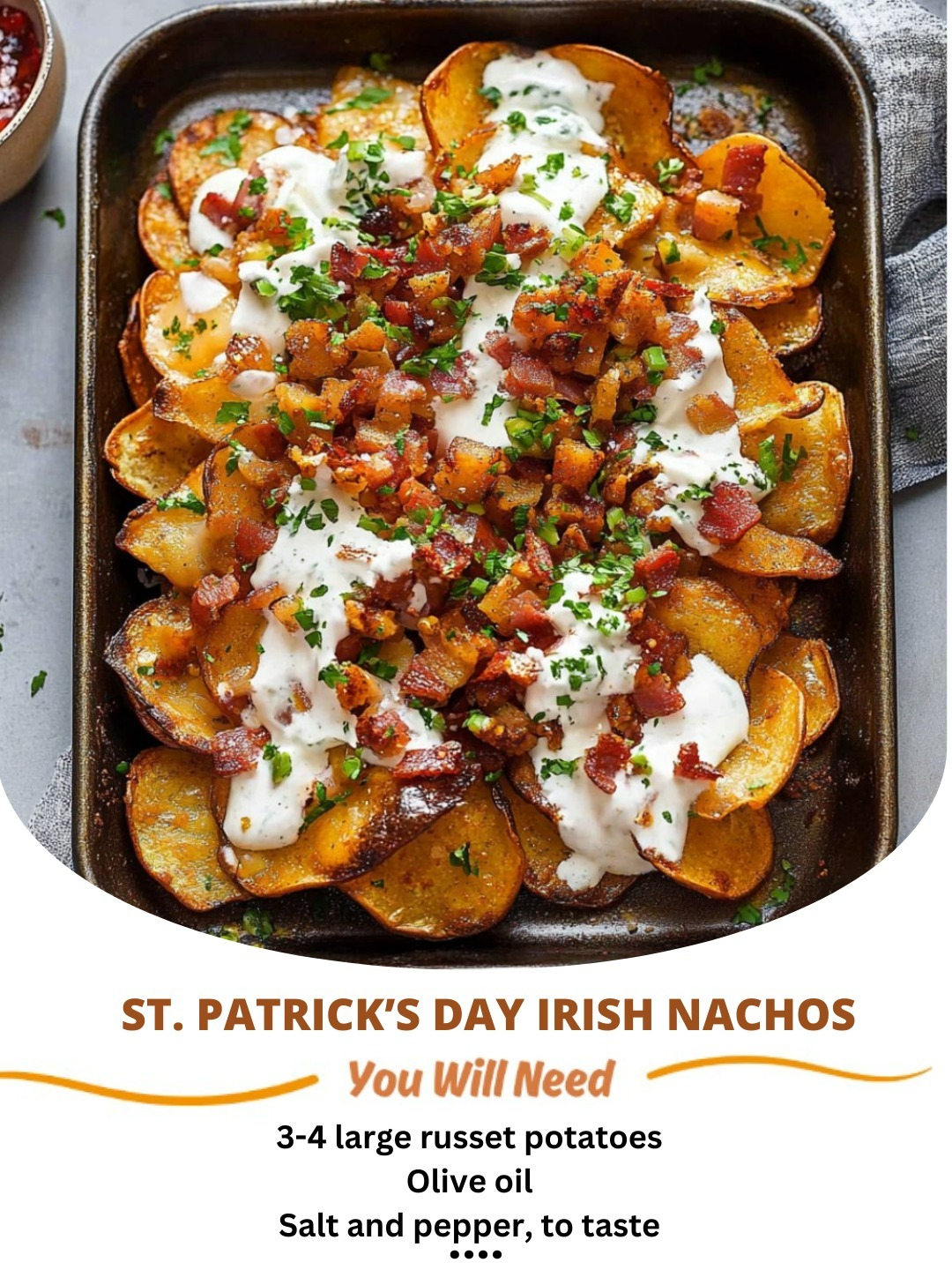ADVERTISEMENT
# St. Patrick’s Day Irish Nachos: A Delicious Twist on a Classic Snack
## Introduction
St. Patrick’s Day is a time to celebrate Irish culture, tradition, and, of course, food. While Irish cuisine is rich with hearty stews, savory pies, and comforting dishes, there’s always room for a fun twist on traditional favorites. Enter **St. Patrick’s Day Irish Nachos**—a mouthwatering fusion of Irish ingredients and the beloved Tex-Mex snack. Imagine the crispy satisfaction of nachos but with a distinctly Irish flair. **Potato wedges**, **melted cheese**, **bacon**, and **green onions** combine in a playful and indulgent dish that celebrates Irish ingredients in a fun, accessible way.
These Irish Nachos take the concept of nachos and put a spin on them by using **crispy potato slices** instead of tortilla chips, making them perfect for those who love potatoes—one of Ireland’s most iconic ingredients. Top them off with tangy **cheddar cheese**, smoky **bacon**, and a dollop of **sour cream**, and you’ve got yourself a snack that’s as hearty as it is festive. Whether you’re hosting a St. Patrick’s Day party, enjoying a cozy meal with friends, or just want a savory treat to celebrate the holiday, these Irish Nachos are sure to become a favorite.
In this article, we will explore everything you need to know about making **St. Patrick’s Day Irish Nachos**, from their origins to detailed step-by-step instructions, creative variations, and tips to make them the star of your holiday celebration. We’ll also dive into the story behind these nachos and how they tie into Irish culture and St. Patrick’s Day festivities. So, grab your apron and get ready to create a dish that will be a hit at your next St. Patrick’s Day celebration.
## The Origins of Irish Nachos
### The History of Nachos
Before we delve into the specifics of **Irish Nachos**, it’s helpful to understand the history of the original dish: **nachos**. The creation of nachos is credited to a Mexican chef named **Ignacio Anaya**, who invented them in the 1940s at a restaurant in **Piedras Negras**, a town just across the border from Texas. According to legend, the dish was created when a group of American military wives came into the restaurant after closing hours and asked for something to eat. With limited ingredients available, Ignacio prepared a simple dish of **tortilla chips** topped with **melted cheese** and **jalapeños**. The dish quickly gained popularity, and it eventually evolved into the nachos we know today—loaded with toppings like **guacamole**, **sour cream**, **ground beef**, and more.
Nachos became a staple in Tex-Mex cuisine and quickly spread across the United States, becoming a favorite snack at sports events, parties, and casual gatherings. The flexibility of nachos—being able to customize them with a variety of ingredients—made them a beloved dish in many regions and cultures.
### The Irish Twist
While nachos originated in **Mexico**, the concept of taking a popular dish and adding a cultural twist is not new. Many cuisines around the world have adapted dishes to reflect local flavors and ingredients. **Irish nachos** are one such example, combining the comfort of nachos with traditional Irish ingredients, like **potatoes** and **cheddar cheese**.
The use of **potatoes** in Irish nachos comes from Ireland’s long history with the vegetable. Potatoes are a staple in Irish cuisine and are used in a variety of dishes, from **mashed potatoes** and **potato soup** to **boxty** and **Irish stew**. By swapping out tortilla chips for crispy potato wedges or fries, **Irish nachos** not only pay homage to the iconic Irish potato but also bring an entirely new and exciting twist to the beloved snack.
Although **St. Patrick’s Day Irish Nachos** are often associated with the festive celebration of St. Patrick’s Day, they can be enjoyed year-round. With their rich, hearty flavors and customizable toppings, these nachos are a fantastic appetizer or side dish for any occasion, but they’re especially fitting for St. Patrick’s Day.
For Complete Cooking STEPS Please Head On Over To Next Page Or Open button (>) and don’t forget to SHARE with your Facebook friends
